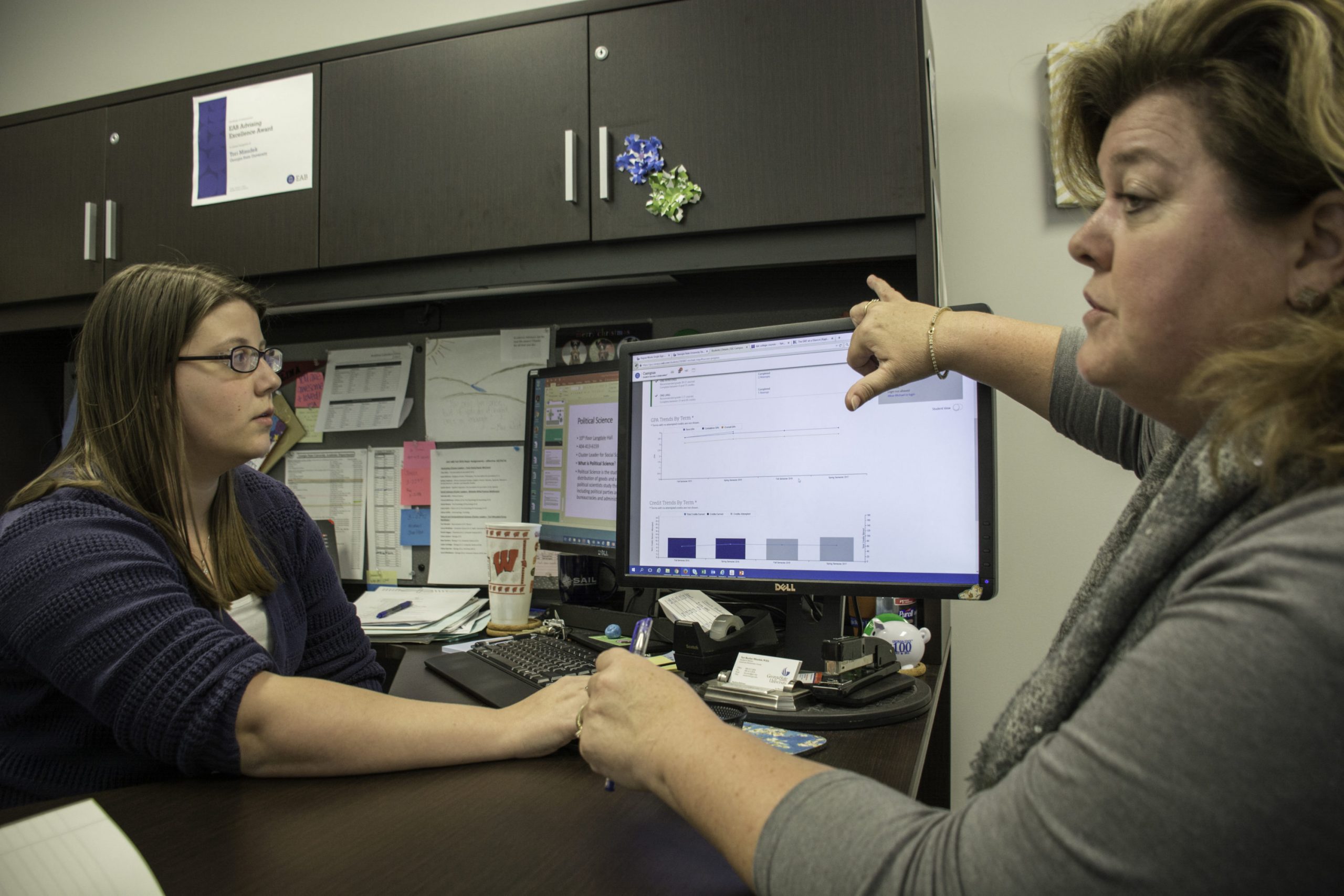
The University Advisement Center often receives a bad rep from students who share their complicated experiences. After crunching some numbers and reaching out to Timothy Renick, the senior vice president for Student Success, The Signal found that compared the the national average of 1 adviser per 300 students, Georgia State’s Advisement Center is actually lower than average at one adviser per 239 students.
In 2011, the ratio was double it is now, at 700-to-1. But per the University Strategic Plan, Georgia State hired 42 new advisers, bringing the student-to-adviser ratio from the original 700-to-1 to 300-to-1, also considered the “national standard.” Calculating a student-to-adviser ratio is easy — with the right data, but there are a few large caveats to what information should be included and where.
Who should be included?
The first important piece of information to know is whether assistant directors under advisement also advise students and if this contribution should be included in the ratio. The Signal included these numbers in the ration but without them, the ratios would shift.
The numbers from the Perimeter advisement centers are grouped together, separated from the Downtown campus. Perimeter campuses yield 48 advisers to cover 17,874 students, which equates to a ratio of 372-to-1.
While this ratio doesn’t meet the national standard, the university is making progress. Before consolidation the ratio was over 1,000-to-1, according to Renick.
“We are still working to build up advising staffing levels at Perimeter College, but these numbers have dropped,” Renick said.
Graduate students are also not included in the general advisement ratio. The advisement process is different in graduate school, as students are typically advised by a faculty adviser assigned to a few other students at a time, making their ratio extremely low compared to the national average.
The ratio
When it comes down to the overall ratio, there are 71 advisers under the university advisement center and 36 advisers from individual colleges, bringing the total to 107 advisers.
With 25,656 undergraduate students, that’s where the 239-to-1 ratio comes in.
“Since Georgia State adopted its innovative advising model in 2012, there have been more than 300,000 one-on-one meetings between advisers and students that were prompted by advisers proactively reaching out to students,” Renick said. “This system has helped to raise Georgia State’s graduation rates to record levels; to eliminate all achievement gaps based on race, ethnicity and income level; and to lower the average time it takes Georgia State students to earn bachelor’s degrees by more than half a semester.”
Renick also cites the anonymous survey that students are encouraged to complete upon exiting their session, of which he says the majority of responses are positive.
Advisement Center changes
Rasha Ramzy, the undergraduate director for the Communications Department, has seen some improvement with the Advisement Center’s functionality.
Advisement was initially given from each department before it was moved to its current location on the fourth and fifth floor of 25 Park Place. After this move, Ramzy saw some problems.
“There were a lot of gaps in the system,” Ramzy said. “But since then, they have really made an effort to touch base every semester make sure we are all in sync and if anything has changed or been updated they’ve been really good about communicating and letting us communicate with them.”
The Signal submitted an open records request for a list of all advisers from the past 10 years, along with their date of hire, termination or transfer and reason for doing so, to find out how long advisers stay employed.
Of those no longer employed, the average length of employment was 1.9 years with the median at 1.3 years.
“We are working to increase the percent of advisers who stay with us for more than two years,” Renick said.
The department recently increased pay for staff members that were adviser level two, which Renick says is because they are the most attractive hires for other institutions since they have already been trained by Georgia State.
“We believe this move will positively impact adviser retention rates,” he said.
How to do advisement right
Some Georgia State students have no hesitation when it comes to expressing dissatisfaction regarding the advisement center.
At the Feb. 28 Student Government Association meeting, Georgia State student and SGA Senator Sheri Kearse raised concerns about a lack of consistent information among academic advisers.
“So, let’s say you have a hold for whatever reason and you know you have to go back in to the advisement center,” Kearse said. “You might to have to sit with another adviser and they’ll give you a whole different spreadsheet, a whole different layout and there’s no consistency.”
She expressed concerns over the experience of going for a walk-in or being assigned a different adviser and receiving inconsistent feedback on what the best actions to take are.
In her instance, she was given a variety of advice on how to move forward with her situation. One adviser recommended summer classes, another recommended going through the Atlanta campus and the last recommended online courses through the Perimeter campus.
“I understand that there’s multiple paths to get to your end goal but sometimes they contradict one another and I just feel like there should be more consistency among those advisers to guide those students in the right direction,” Kearse said.
Renick said that one way to solve this problem is to avoid walk-ins and schedule an appointment with the adviser you’re assigned to. He also said the majority of students come for walk-ins rather than scheduled meetings – which is why they end up seeing multiple advisers over their academic career at Georgia State.
“Students can see multiple advisers for a number of reasons,” Renick said. “Sometimes their adviser has been promoted or left for another job. In other cases, students have changed their major and are assigned an adviser in their new field of study.”
